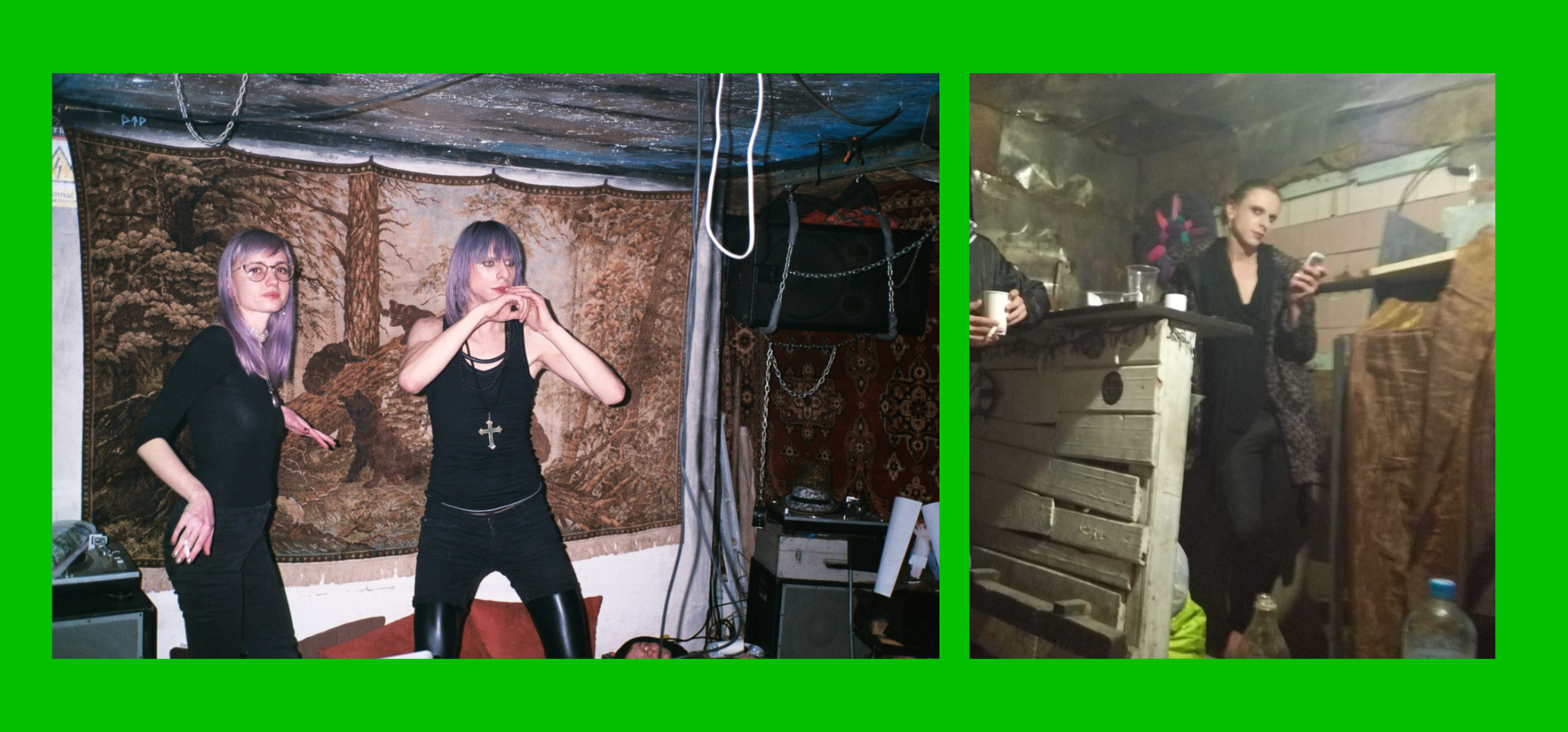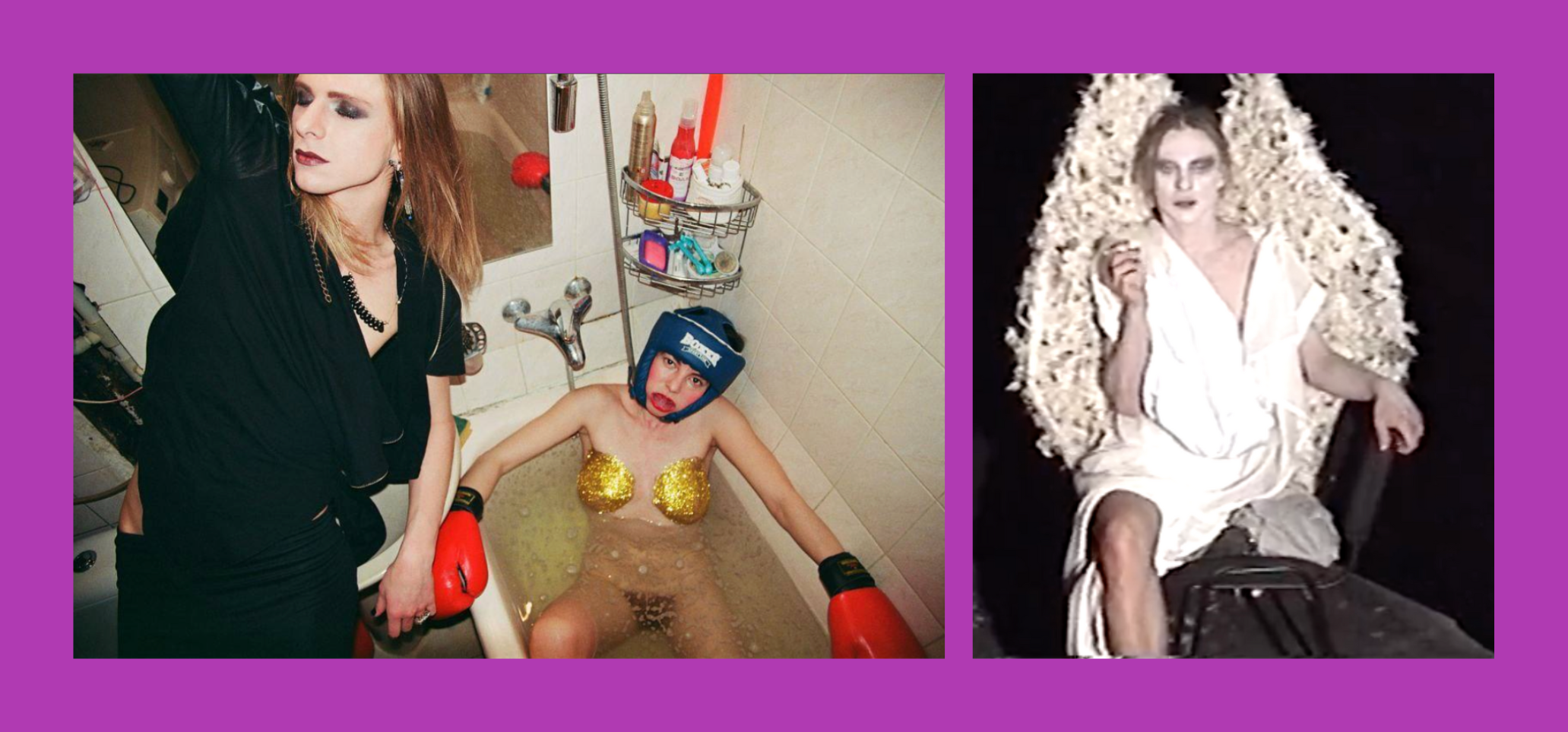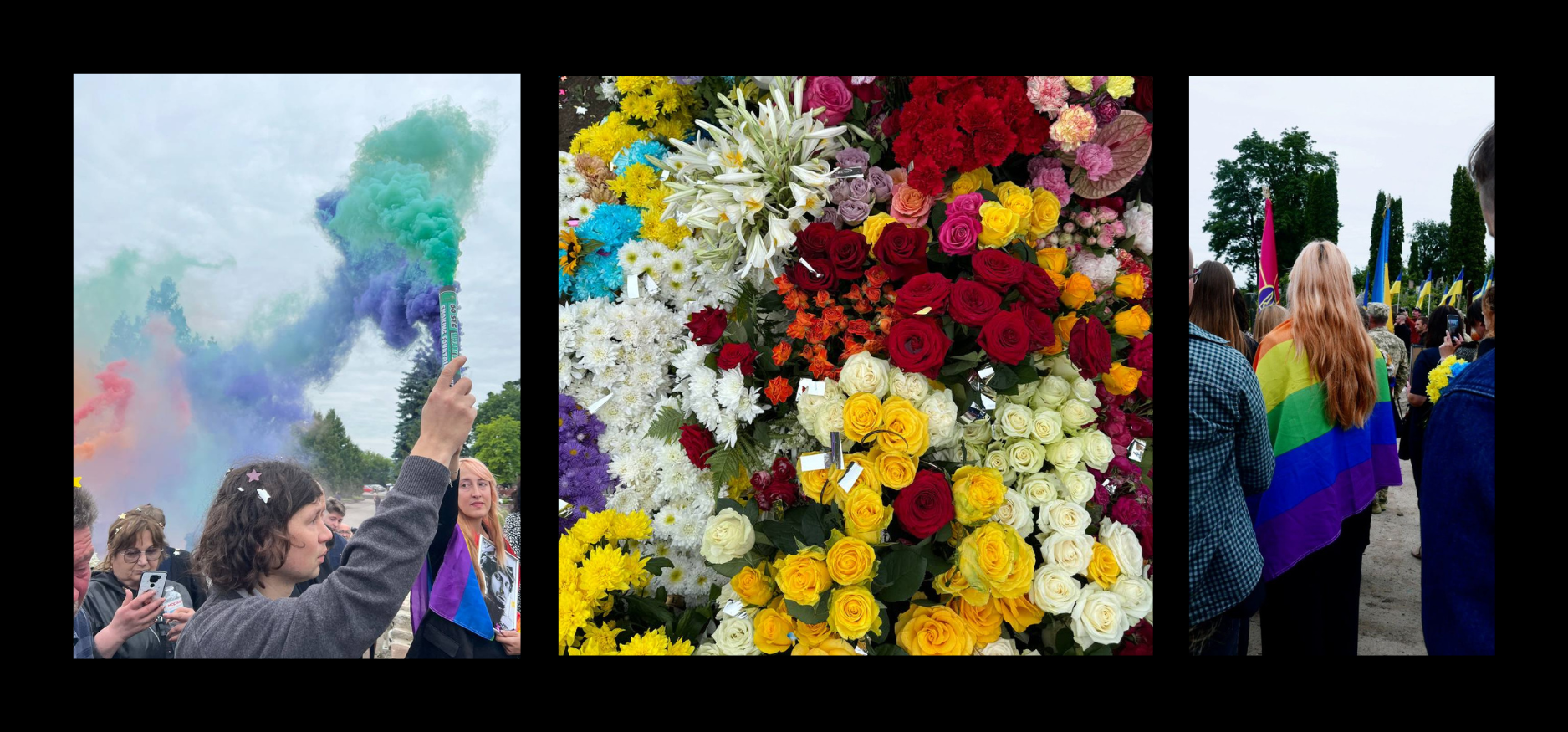Artur Snitkus was an artist, performer, and musician praised as an underground scene icon. In June 2023, he was called to defend Ukrainians from the Russian invasion. On June 7, 2024, he tragically lost his life fighting against the Russian neofascists. Artur died in one of the most intense areas of the frontline, fully embodying the Ukrainian resistance and burden of the war.

Artur Snitkus as a combatant. Photo from his instagram account @mr.snitkus, as of 9.04.2023
Obituaries and epitaphs are what fill the social media feeds of Ukrainians today. Now, when I see a portrait photo of a soldier, my first immediate reaction is, “I hope it’s not the news of their death.” Lately, however, it has been precisely this kind of news. Beautiful, young, intelligent, and talented people are dying while defending their land from the Russian invaders. This is the reality of the war, the reality of the present, the reality of the resistance of Ukrainian society. In this new reality, incredibly complex ethical questions arise, and we are constantly looking for words to express our horror, despair, and pain. On June 11, 2024, I got news about the death of my friend Artur.
When I think about Artur Snitkus, memory brings up a whole layer of Ukrainian underground culture: Club Otel’, Efir and artists-run space Andriushchenko in Kyiv, SRZ and Kuyalnyk in Odesa, Zavodska in Lviv, music and media art festivals such as Fantazery in Carpathian mountains and Hamselyt in Ternopil and many more. He appeared in Mikhailo Koptiev’s wild fashion theatre “Orhidea,” Oksana Kazmina and Anatolii Belov’s film “Fiest of Life,” Oleksiy Radynsky’s “Landslide.” I also recall many artists and musicians with whom he worked: Ira Novikova, Kateryna Yermolaieva, AntiiGonna, Olya Steblak, Zhanna Kadyrova, Andriy Savinykh, Gosha Babanskyi. These events and places cannot be imagined without his presence. He embodied the celebration of life and seemed to have been born to drink champagne and dance like a god. The brave, spontaneous, kind, and sincere person whose strong and warm embrace is remembered by many friends who gathered online and offline to mourn his passing.

Artur Snitkus. Photo credits: Sasha Kurmas, Sheremeta
In the Ukrainian language, there are two words for someone who makes art: “mytets” (ukr. митець) and “artyst” (ukr. артист). The difference is that a “mytets” is, to put it simply, an entrepreneur who produces art, and an “artist” is a person whose way of life is a performance in itself. Artur Snitkus was an outstanding artist. He was a person who changed the space around him with his charm, inviting everyone around him into his immersive game of fun and laughter. His artistic practice was beyond any institutions or portfolios; therefore, when I try to give any definition of his work, I feel that I am creating a framework that does not yet exist. He was a master of improvisation, and by breaking the rules and definitions, he created a space that captured and immersed in all those present. His practice was about constant involvement, movement, and interaction.

Artur Snitkus performing man and woman roles (red dress, grey suit right) and Iryna Novikova (grey suit left). Photo by Igor Makedon, 2016
One of his brightest and most high-profile projects was the duo O created in collaboration with singer and musician Iryna Novikova. It was an electronic music project where Ira and Arthur played with gender stereotypes. They were invited to events organized by the Ukrainian LGBTQ community, and when they got into the lens of photographer Igor Makedon, they made a splash with their images. At the time, Arthur was also starring in the film “Fiest of Life” by Oksana Kazmina and Anatolii Belov, and many cultural figures met him on the set of the club Otel’ in Kyiv. Curator Lina Romaniukha recalls the first time she saw him wearing a black dress and had long blond hair on the set. She thought to herself, ‘My God, what a beautiful lady!”. Later, Lina organized an artist talk by Artur Snitkus in the art space IZOLYATSIA[1], where Arthur spoke about his experience of serving in the army from 2011-2012[2] and read his poems written during his military service. She believes that his artistic practice was integral to his life in its multidisciplinarity and Artur’s multifaceted personality. “Singing, design, modeling, drawing, poetry. He didn’t institutionalize his practice. It was completely spontaneous and sincere,” the curator says.
Artur also had a joint practice with the artist Kateryna Yermolaieva, who works in the genre of cross-dressing and role-playing. “Artur loved me not for my profession, not because I was an artist. He simply loved people with all his heart. He saw my personality.” Kateryna recalls how he came to visit her at the residency “Sorry, No Rooms Available” in Uzhhorod in 2016: “I lived in a very cold hotel room, there was nothing there. Artur came to visit me, and the next morning, I woke up and it was no longer a room but a home. He could make the most of the least.”

Efir club. (1) Me and Artur dancing during one of the parties. Photo: Vadim Zinchuk. (2) Artur in the “metal room” holding a mobile phone to play pop music. Photo: Sasha Dolgiy. 2017
Many artists got to know him in 2015–2016 at the Efir Club, a vibrant center of the Kyiv underground. Efir was founded by a group of artists back in 2013 as a studio in the basement space on the site of a garment factory that was later revitalized into an exhibition, concert, party venue, and bar that was a magnet for all kinds of artists, cultural critics, art historians, activists, and subculture people. Efir was the ground that raised a whole galaxy of musicians, artists, and cultural activists.
There was a special secret “metal room” where conceptualists and critical artists would spend days and nights talking in the puffs of smoke. This environment was beyond any market relations, it was so vivid that when I was there for the first time, I felt like I was in a movie. This place was a safe space for experimentation, reflection, criticism, and implementation of new rules and ideas, where everyone was a co-creator of the action here and now.
In 2015, Artur Snitkus became a part of the Efir community. Let me describe one of his well-known and beloved performances: in the club’s “metal room,” without windows or clocks, he would spread out his lipsticks, mascaras, eye-shadows, powders, and blushes on the table and start to put on make-up. This could last for hours because it was accompanied by talks, jokes, flirting, and dancing to the fierce pop music he turned on his mobile phone.

Photo by Olexandra Dzhaparidze @kalimaheshvari, Ternopil, 2013
Zhanna Kadyrova, the artist who has been working with Artur for more than four years and actively supported Artur when he was already on the frontline, also met him for the first time in Efir. Zhanna admires him as a master of improvisation: “He was constantly making something up, organizing events, singing, telling stories, making up. Whether to decorate this world with himself or to decorate other people. He was simply always where art was born. The last time we met, he was telling us about his service and was inspired by it. He told us everything very positively, and we laughed at his stories throughout the entire night. Then we took him to see some new clubs in Kyiv. He liked it very much and said he would come back. Pretty soon, he was transferred to Donbas. Then was his last military performance. This is how he accepted the challenges of life. Unfortunately, war is a terrible and ruthless machine, and charisma does not work against shelling.”

(1) Artur Snitkus and AntiiGonna. Photo: Andriy Boyko. (2) Artur performing as an angel in AntiiGonna’s porn-horror movie “The Angel Fucks the Clown.” Camera: Andriy Boyko, 2016
Zhanna Kadyrova and Artur also collaborated in the Odesa artist-run space SRZ (a former shipyard building). This is how Odesa artist Yevheniia volno Maior, who was also part of the SRZ community, remembers him: “Artur was always among the brightest, loudest, and freest people. He brought ideas, helped in the kitchen, dressed up, and painted his colleagues. He was always empathetic, energetic, and attentive to the opinions of others. He was our star. Together with Andrey Savinykh (DJ Superelit), they performed at Zhanna Kadyrova’s exhibition, and he was the mascot at Slavik Breu’s “Kuyalnyk” parties. He was highly respected for his courage, and as a person with humor and personality, everyone in Odesa was happy with Artur, from the nasty security guard to the beachside salesmen.”
Musician and media artist Andriy Savinykh (DJ Superelite), Artur’s close friend, says that he set an example of a positive attitude towards the army: “Every time I called him, he was in a good mood and told me about his successes and his desire to change the system. Everyone supported him. This motivated me at the time and relieved my anxiety about what would happen if I were taken to the army. I thought that if even such sensitive people could find their place there, so I’ll do either.”
Right after joining the Ukrainian Armed Forces, Artur created an Instagram account to share stories and selfies with his friends. In his photos and videos, he did not pose with weapons but sent us pictures of forests, lakes, and flowers. He wrote to us many times that he loved us too much and everything would be alright.
Oleksiy Radynski, director of the documentary about Kyiv graffiti and underground scene “Landslide,“ says: “Arthur was an artist who had completely merged his life and his art. He was an avant-garde artist in the most profound sense. Life was a non-stop performance for him – he never stopped performing, whatever he was busy with. It seems that the war was no exception. I’ve been talking to his friends who had met him on the frontline, and they say that even in the horrific reality of war, he was the same Artur we always knew.”

Artur’s funerals in Ternopil. His friend performing with rainbow fog, stickers, and glitters. Photo credits (1), (2) Leonid Maruschchak, (3) Lena Yaremchuk, 2024
Sergeant Artur Snitkus, codename Snikers, was killed on June 7, 2024, by mortar fire in Donbas, fighting with Russian occupiers for our freedom. He believed that it was his duty, which he fulfilled with dignity.
—
[1] IZOLYATSIA. Platform for Cultural Initiatives was originally situated in Donetsk, Ukraine. However, with the beginning of the Russian invasion of Ukraine in 2014, its team was forced to relocate to Kyiv. Simultaneously, on the site of the cultural institution in Donetsk under the occupation, Russians created the Izolyatsia prison—a concentration camp for torture.
[2] Mandatory conscription in Ukraine implies that men between 18 and 25 should serve in the army. Conscription was abolished in 2013 but reinstated in 2014 due to the Russian invasion.


